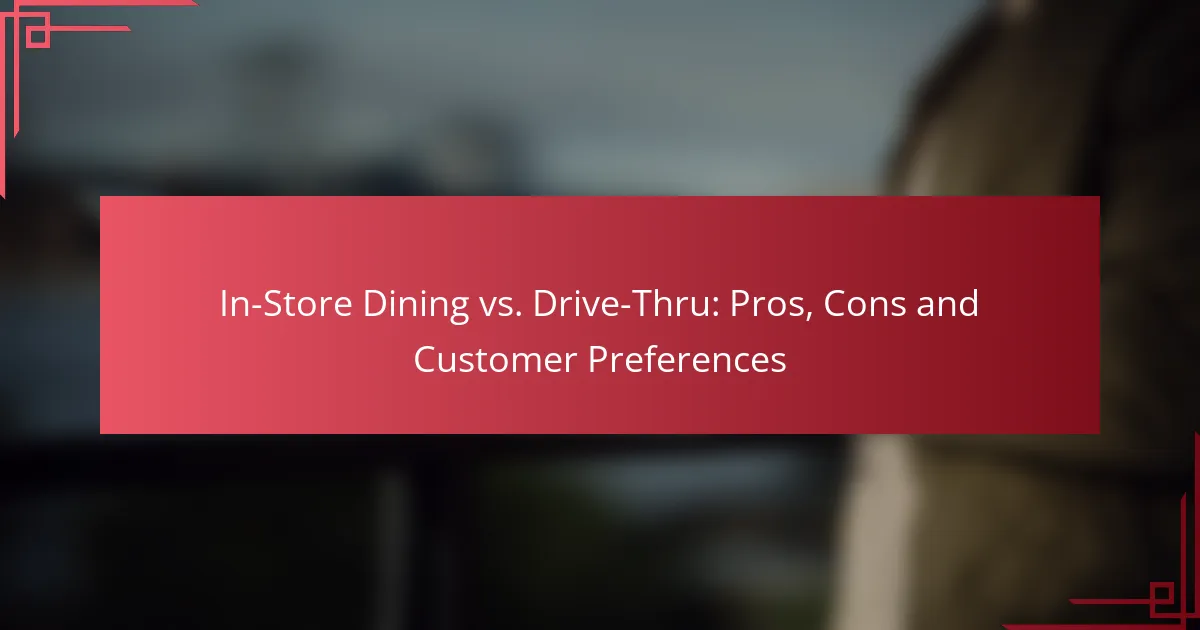The choice between in-store dining and drive-thru options presents distinct advantages and disadvantages for customers in the UK. While in-store dining enhances the meal experience through social engagement and a broader menu selection, it often comes with longer wait times and higher costs. Conversely, drive-thru dining prioritizes speed and convenience, catering to those seeking quick service without the need to leave their vehicles. Understanding these preferences can help businesses tailor their offerings to meet customer needs effectively.

What are the pros of in-store dining in the UK?
In-store dining in the UK offers several advantages, including a more immersive experience, social engagement, and a wider selection of menu items. Customers often prefer this option for its ability to enhance the overall meal experience.
Enhanced dining experience
In-store dining provides a more engaging atmosphere compared to drive-thru options. Customers can enjoy their meals in a comfortable setting, often with better presentation and service. The ability to customize orders on-site adds to this enhanced experience.
Many restaurants offer unique features, such as open kitchens or chef interactions, which can elevate the dining experience. This personal touch can make meals feel more special and memorable.
Social interaction opportunities
Dining in-store allows for greater social interaction, whether with friends, family, or even staff. This setting encourages conversation and connection, which can enhance the enjoyment of the meal.
For many, sharing a meal in a restaurant is a social event, making it ideal for gatherings or celebrations. The communal atmosphere can foster relationships and create lasting memories.
Access to full menu
When dining in-store, customers typically have access to the entire menu, including items that may not be available through drive-thru services. This variety allows diners to explore different options and discover new favorites.
Some restaurants also offer exclusive in-store specials or promotions that are not available for takeout. This can make the in-store experience more appealing for those looking to try something new.
Ambiance and atmosphere
The ambiance of a restaurant plays a significant role in the dining experience. In-store dining often features carefully designed interiors, music, and lighting that contribute to a pleasant atmosphere.
This environment can enhance the enjoyment of the meal, making it more relaxing and enjoyable. For many diners, the overall atmosphere is just as important as the food itself, influencing their choice to dine in rather than opt for drive-thru.
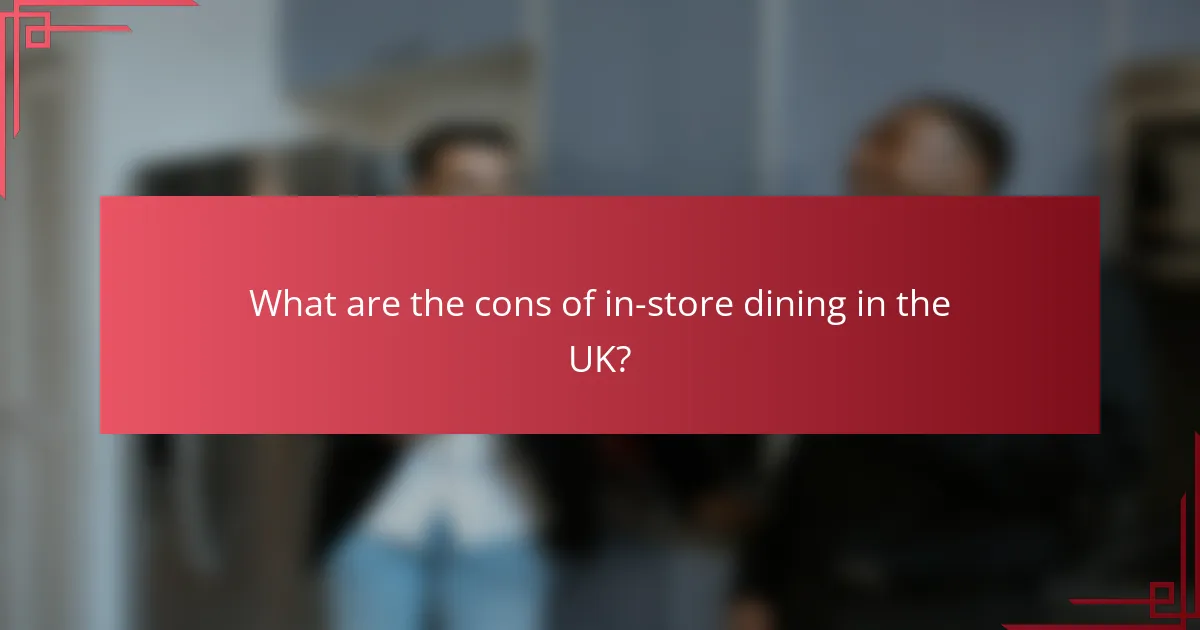
What are the cons of in-store dining in the UK?
In-store dining in the UK can present several drawbacks, including longer wait times, higher costs, and limited convenience compared to alternatives like drive-thru options. These factors can significantly affect customer satisfaction and overall dining experience.
Longer wait times
One of the main disadvantages of in-store dining is the potential for longer wait times. Customers may experience delays during busy hours, especially in popular restaurants where seating is limited. This can lead to frustration, particularly for those on tight schedules.
To mitigate this, diners can consider visiting during off-peak hours or making reservations where possible. Understanding peak times for specific restaurants can help avoid long waits.
Higher costs
In-store dining often comes with higher costs compared to drive-thru options. Customers may face additional expenses such as service charges, tips, and higher menu prices due to the dining experience. This can make dining out less appealing for budget-conscious individuals.
To manage costs, diners can look for special deals or promotions that restaurants may offer. Checking for set menus or lunch specials can also provide more affordable options without sacrificing the dining experience.
Limited convenience
In-store dining may lack the convenience that drive-thru services offer, particularly for those with busy lifestyles. Customers have to park, enter the restaurant, and wait for their food, which can be time-consuming. This is less ideal for individuals looking for a quick meal on the go.
For a more convenient experience, customers can consider using mobile ordering or takeout options, which allow them to enjoy their favorite meals without the need for in-store dining. This can save time and enhance overall satisfaction.
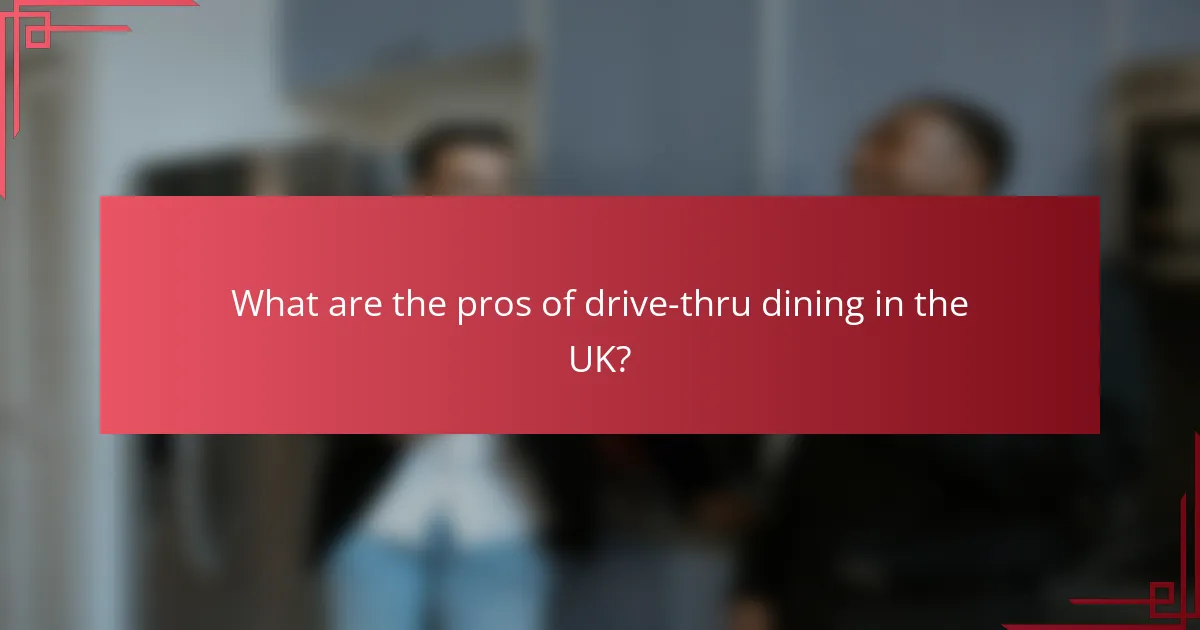
What are the pros of drive-thru dining in the UK?
Drive-thru dining in the UK offers several advantages, including speed, convenience, and accessibility for families. It allows customers to quickly order and receive their meals without leaving their vehicles, making it a popular choice for those on the go.
Speed and convenience
Drive-thru dining is designed for quick service, often allowing customers to complete their orders in a matter of minutes. Many establishments have streamlined their processes, enabling them to serve food in low tens of seconds during peak hours.
This speed is particularly beneficial for busy individuals or families who may not have time to sit down for a meal. The convenience of ordering from your car eliminates the need to find parking or navigate crowded dining areas.
Accessibility for families
Drive-thru options are especially appealing for families with young children. Parents can easily manage their kids while remaining in the car, avoiding the hassle of getting everyone in and out of a restaurant.
Additionally, many drive-thrus offer kid-friendly meals and promotions, making it a practical choice for family outings. This setup allows families to enjoy a meal together without the stress of traditional dining experiences.
Reduced contact with others
Drive-thru dining minimizes physical interaction, which can be a significant advantage for health-conscious individuals. Customers can place their orders and receive their food without entering a restaurant, reducing exposure to crowds.
This aspect has become increasingly important in light of health guidelines and preferences for social distancing. Many drive-thrus have implemented contactless payment options, further enhancing safety and convenience.
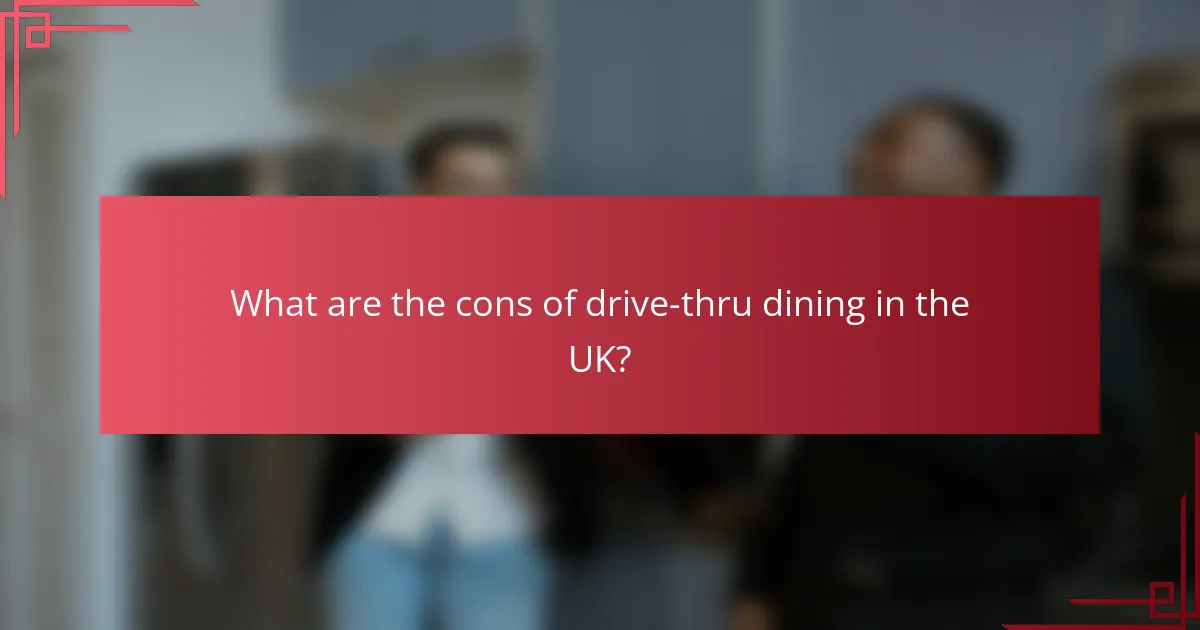
What are the cons of drive-thru dining in the UK?
Drive-thru dining in the UK has several drawbacks that can affect customer satisfaction and overall experience. Key issues include limited menu options, a less immersive dining experience, and a higher likelihood of order errors.
Limited menu options
Drive-thru menus typically feature a reduced selection compared to in-store dining. Many establishments streamline their offerings to speed up service, which can leave customers with fewer choices. For example, specialty items or seasonal dishes may not be available at the drive-thru.
This limitation can be frustrating for customers who prefer a wider variety of options or specific dietary choices. If you have particular preferences, it’s advisable to check the drive-thru menu online before visiting.
Less dining experience
The drive-thru experience lacks the ambiance and social interaction found in traditional dining settings. Customers miss out on the opportunity to enjoy the atmosphere of the restaurant, which can enhance the overall meal experience. This can be particularly significant for families or groups looking to spend quality time together.
Moreover, the convenience of drive-thru may come at the cost of slower service during peak hours, leading to a rushed experience. If you value a leisurely meal, consider dining in when possible.
Potential for order errors
Order errors are more common in drive-thru scenarios due to the fast-paced environment and communication challenges. Misunderstandings can occur between customers and staff, leading to incorrect items or missing components. This is particularly prevalent when multiple items are ordered.
To minimize the risk of errors, it’s helpful to double-check your order at the speaker and again at the payment window. Keeping your order simple can also reduce the chances of mistakes occurring.
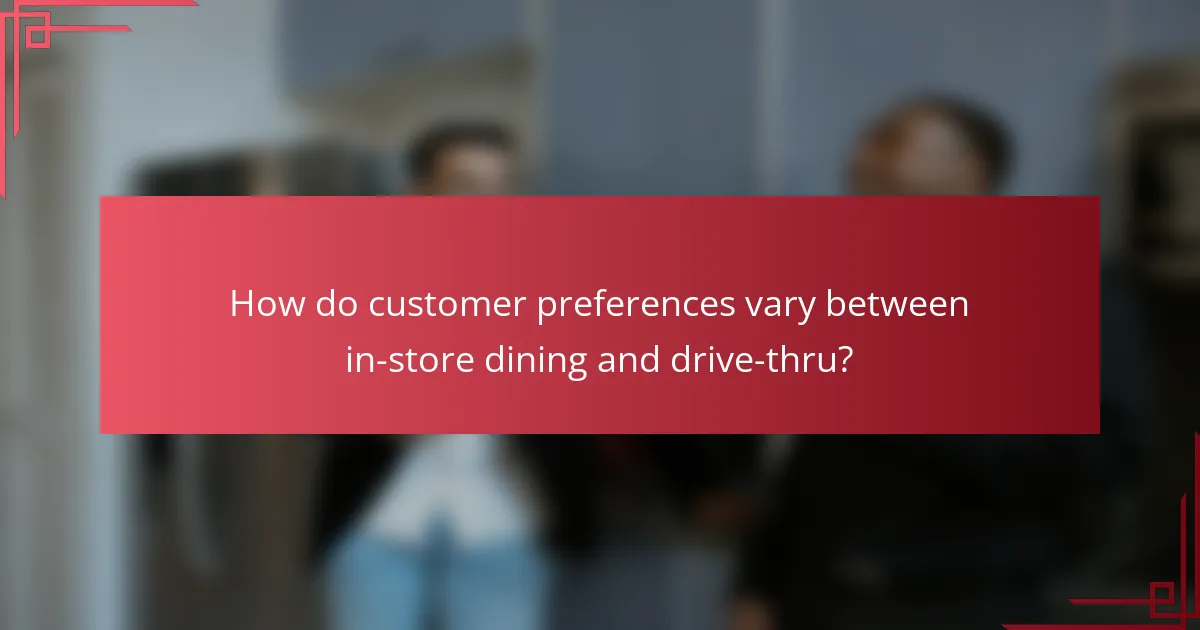
How do customer preferences vary between in-store dining and drive-thru?
Customer preferences between in-store dining and drive-thru options often hinge on factors like convenience, experience, and speed. Many individuals favor drive-thru for quick meals, while others appreciate the ambiance and service of dining in.
Preference for convenience
Convenience plays a significant role in customer choices between in-store dining and drive-thru. Drive-thru services allow customers to order and receive their meals without leaving their vehicles, making it an attractive option for those with busy schedules or families. This can be especially appealing during peak hours when in-store dining may involve longer wait times.
In contrast, in-store dining offers a more relaxed atmosphere, which some customers prefer for socializing or enjoying a meal at a leisurely pace. However, the convenience of drive-thru often outweighs this for individuals looking for a quick solution, particularly during weekdays or when traveling.
To maximize convenience, customers should consider factors like proximity to the restaurant, time of day, and whether they are dining alone or with others. For instance, if traveling with children, a drive-thru may be the more practical choice, while a casual outing with friends might warrant an in-store experience.
